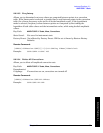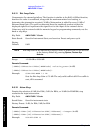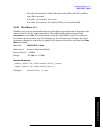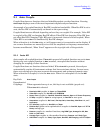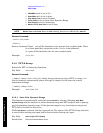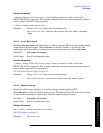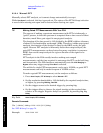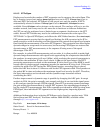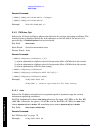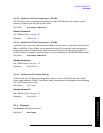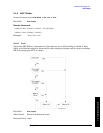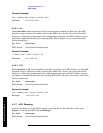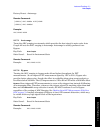
Chapter 2 75
Instrument Functions: A - L
Auto Couple
Instrument Functions: A - L
2.1.2.5 FFTs/Span
Displays and controls the number of FFT segments used to measure the entire Span. This
key is inactive (greyed out) unless
Sweep Type has been set to FFT. If Sweep Type is set to
Auto and FFTs are selected, FFTs/Span is still greyed out, and the number of FFTs
automatically selected is shown. If Sweep Type is set to Manual:FFT, FFTs/Span becomes
available. Press FFTs/Span and an integer can be entered. The analyzer will try to use the
number entered, but it may need to use more due to hardware or software limitations.
An FFT can only be performed over a limited span or segment (also known as the FFT
width). Several FFT widths may need to be combined to measure the entire span. The
“FFT Width” is (Span)/(FFTs/Span), and affects the ADC Dither function. (See
Auto Couple).
FFT measurements require that the signal level driving the A/D converter in the IF be
small enough to avoid overloading, and that the gain that controls that signal level remain
fixed during the measurement of an entire FFT segment. This constraint can allow higher
dynamic ranges in swept mode in some cases, but increasing FFTs/Span can restore that
dynamic range to FFT measurements, at the expense of losing some of the speed
advantages of the FFT.
For example, in pulsed-RF measurements such as radar, it is often possible to make high
dynamic range measurements with signal levels approaching the compression threshold of
the analyzer in swept spans (well over 0 dBm), while resolving the spectral components to
levels below the maximum IF drive level (about -8 dBm at the input mixer). But FFT
processing experiences overloads at the maximum IF drive level even if the RBW is small
enough that no single spectral component exceeds the maximum IF drive level. If the user
reduces the width of an FFT using the FFTs/Span function, an analog filter is placed
beforetheADCthatisabout1.3timesaswideastheFFTsegmentwidth.Thisspreadsout
the pulsed RF in time and reduces the maximum signal level seen by the ADC. Therefore,
the input attenuation can be reduced and the dynamic range increased without
overloading the ADC.
Further improvement in dynamic range is possible by changing the ADC gain. In swept
analysis in PSA, the gain is normally auto ranged such that it can track the signal power
as the analyzer sweeps through CW-like signals. Since FFT processing cannot autorange
the gain within the measurement of a single FFT segment, the autoranging advantage is
lost for single FFT measurements. But if the segments are reduced in width by using more
FFTs/Span, then individual FFT segments can use higher gains, improving dynamic
range.
Additional information about selecting FFTs/Span can be found in a product note, "PSA
Series Swept and FFT Analysis," literature number 5980-3081EN, available online
through http://www.agilent.com.
Key Path:
Auto Couple, FFT & Sweep
State Saved: Saved in Instrument State
Factory Preset: 1
Range: 1 to 400000



